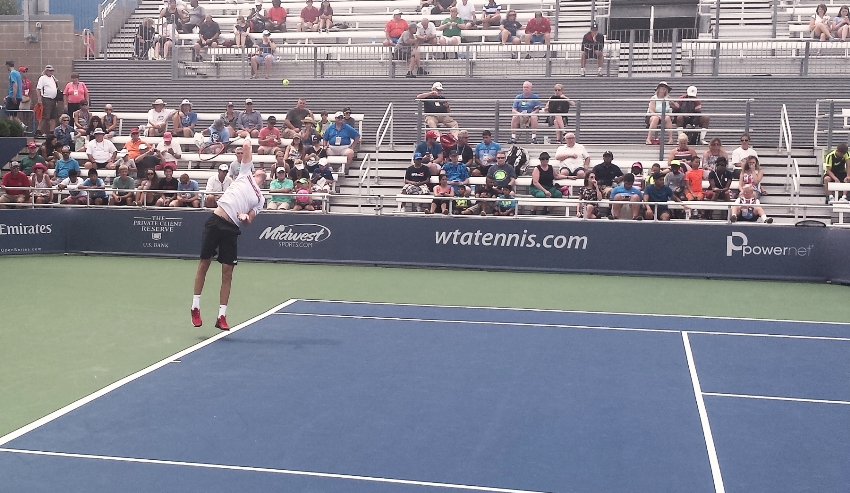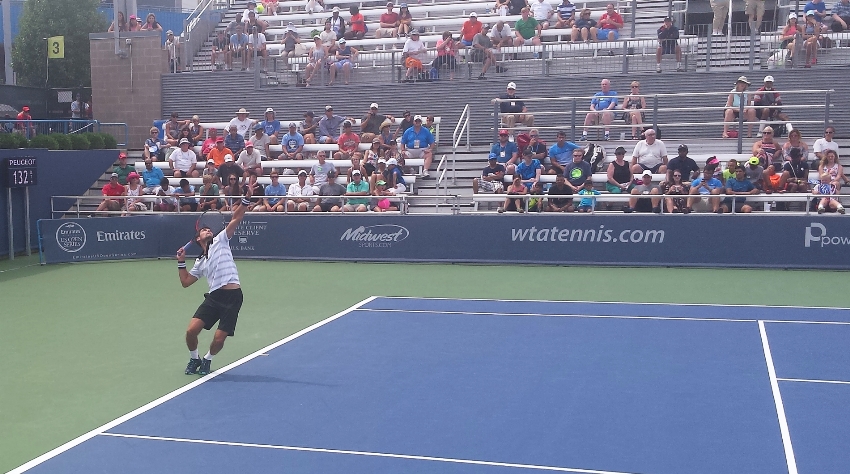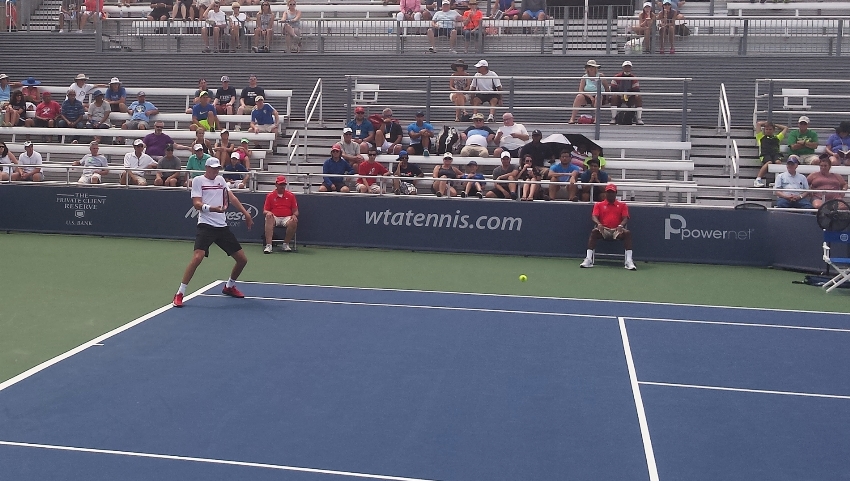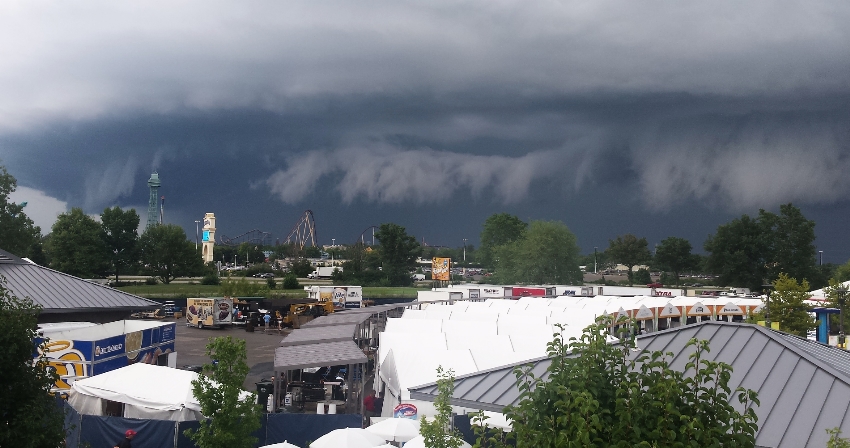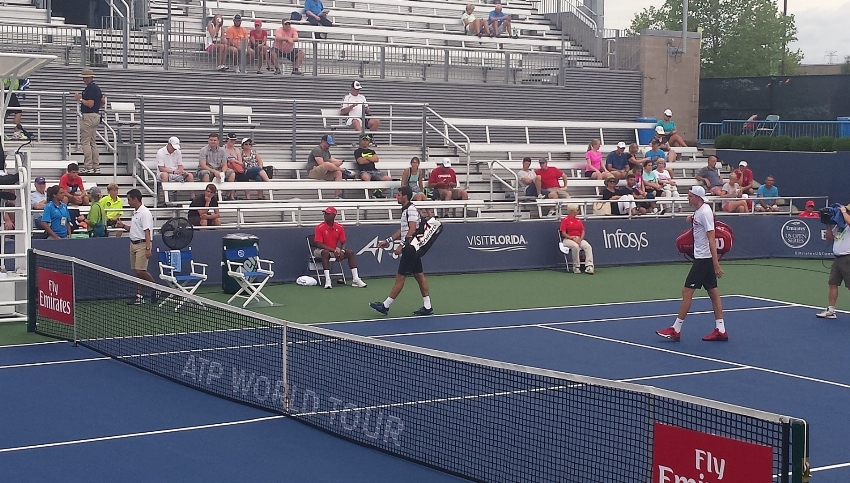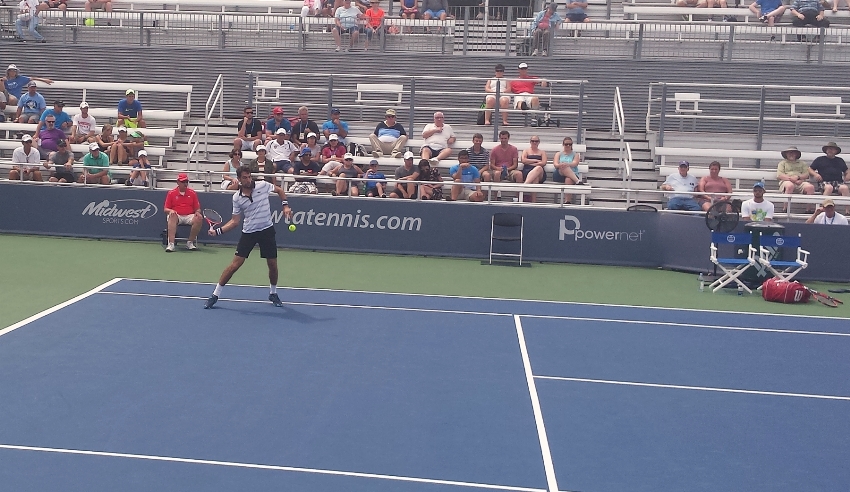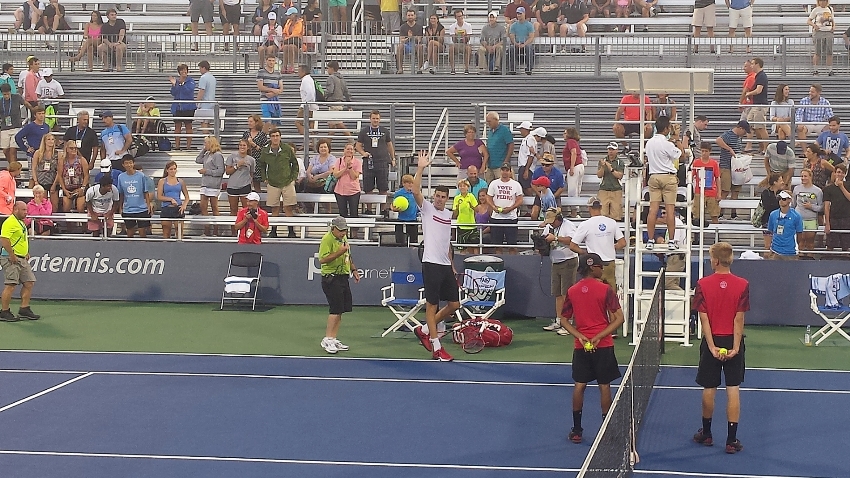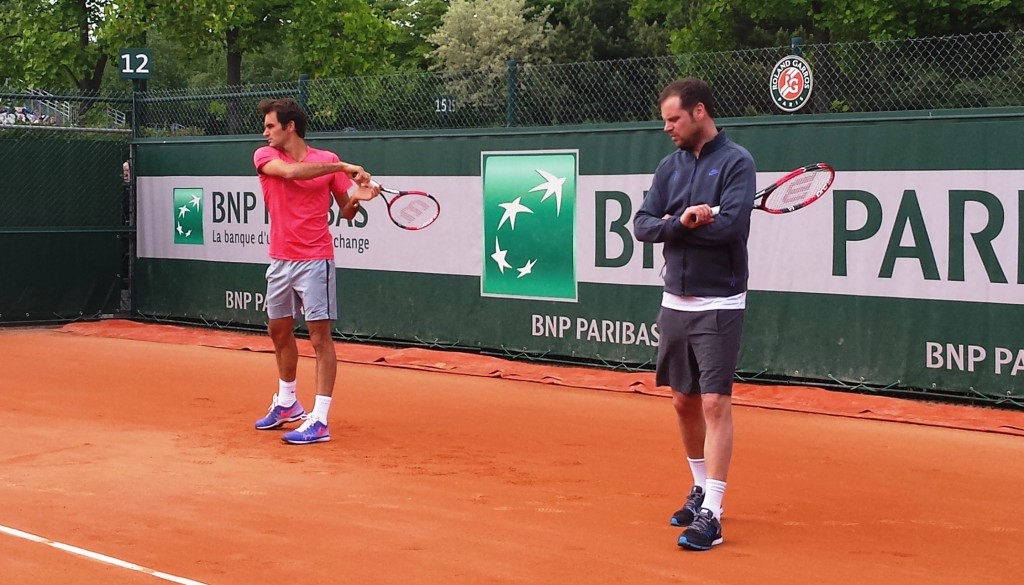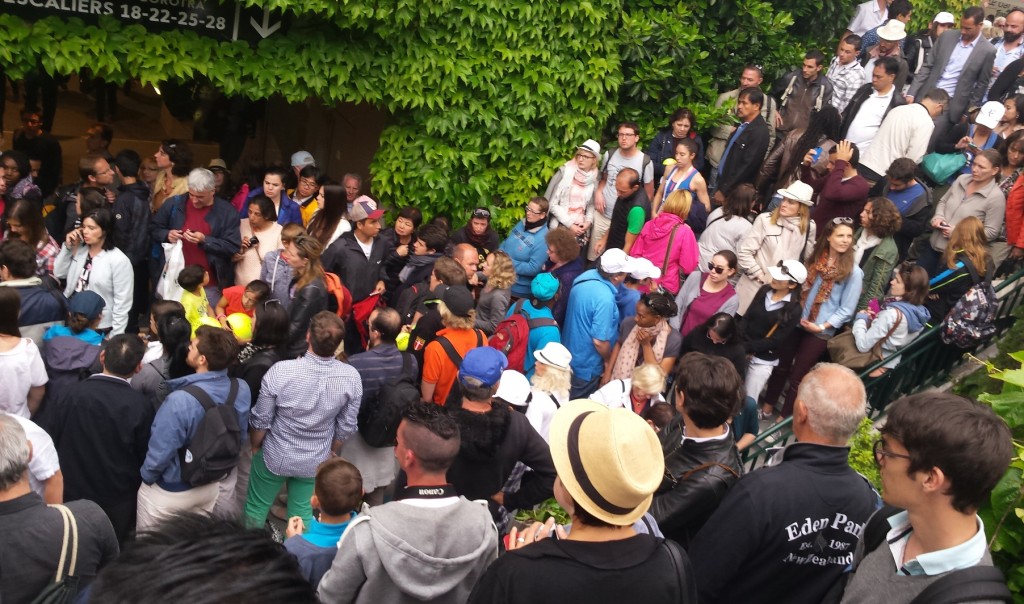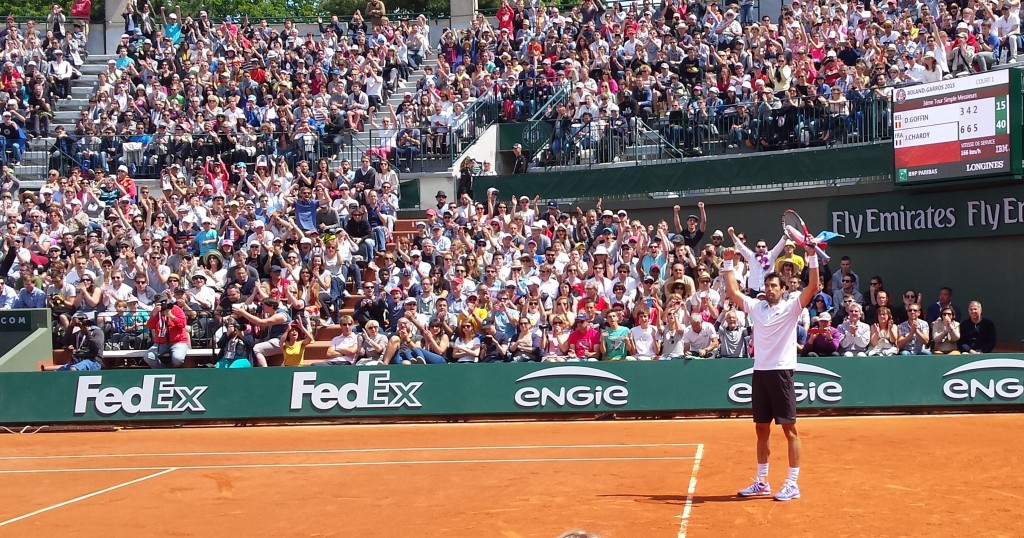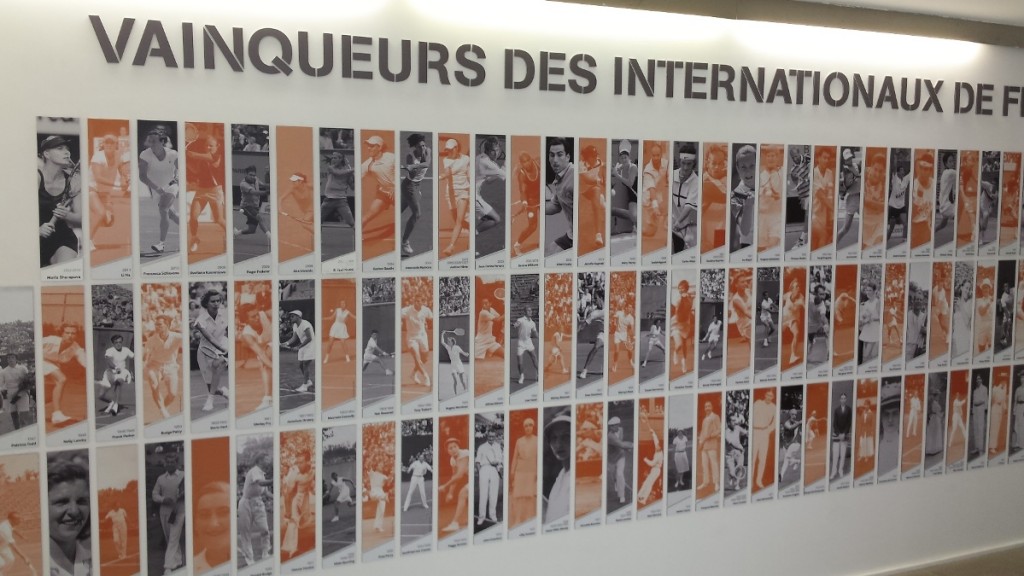Taro Daniel def. Jérémy Chardy 6-3 4-6 6-4
Jérémy Chardy entered the day as the favorite to win the match and the only semifinalist out of the four remaining players to have won an ATP event in his career (Stuttgart 2009). His game-plan is well known to everyone. He relies on his biggest weapon – his forehand – to control points and hit winners. He is also one of the most frequent users of the 1-2 punch thanks to a fairly effective first serve that can set the next shot up for him.
That is exactly how he started the match, winning four straight points to hold serve, including a couple of forehand winners in the process.
Taro Daniel, for his part, was going to need to use his athleticism to get balls back in play and generate power in return, in order to not only counter-punch Chardy’s powerful forehands, but also to produce winners winners of his own. In other words, he would look to negate Chardy’s plan, deal the deck from the bottom so to speak, and put the Frenchman in the more undesired position of having to chase balls.
Daniel managed to hold serve in the second game, saving a break point with a drop shot to bring Chardy to the net and pass him in the ensuing forehand.
The first turning point of the set came at 2-2, on Chardy’s serve. It was a terrific game filled with high-octane baseline rallies, one that showed Daniel going toe-to-toe with his opponent from the baseline. The last two points of the game demonstrated that he was gaining confidence and beginning to impose his game on his opponent. At deuce, there was a long rally with both players using the full parameters of the court and running each other around. Chardy was the first to break down when he missed a backhand slice in the net. In the next point Daniel put a stop to another contested rally by striking a terrific cross-court-backhand winner.
When Daniel held to confirm the break and led 4-2, it was clear that Chardy’s task had just become a lot more tedious. Daniel was beating him at his own game, turning rallies upside down, putting the Frenchman on the defensive, and hitting some spectacular winners, especially with his down-the-line backhand accelerations.
Chardy could also hope that Daniel descended from the clouds. It looked like that may happen when Daniel went up 0-40 at first on Chardy’s serve at 4-2, and committed three errors to squander those opportunities. Chardy eventually held to stay within distance.
But, Taro remained resolved, holding serve with a well-disguised drop-shot winner to safeguard his break advantage. Chardy, for his part, was struggling to regain any type of control during rallies or figuring out how to put the ball away against this pesky opponent who seemed to run everything down and forcing him to produce several big forehands in succession.
Daniel won the first set 6-3, breaking Chardy’s serve one more time when the Frenchman missed a routine backhand wide at deuce and followed it up with a low forehand volley error on set point.
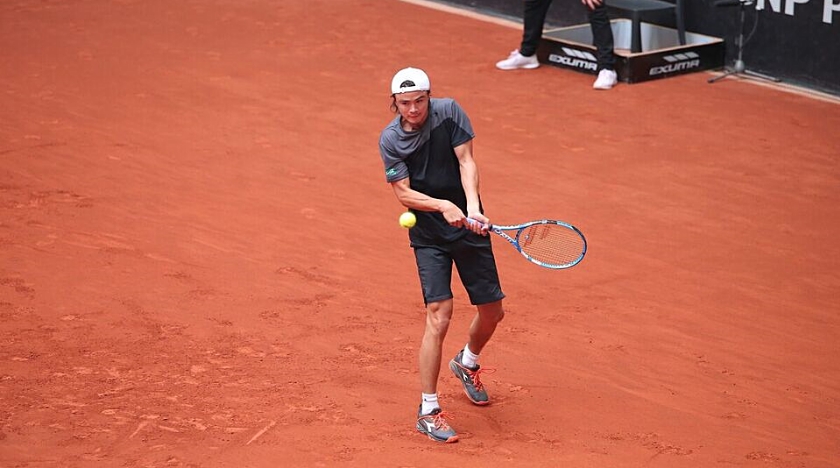
As the second set began, Chardy was not only battling Daniel but also a sense of uncertainty. If Taro continued his flawless rhythm of the last twenty minutes, what could Jérémy do to overcome the challenge and stage a comeback?
The first eight games of the second set gave mixed answers to that question.
But one thing was certain, Chardy had yet to recover his top form. He was still committing the occasional error, and Daniel was not helping matters as he continued to produce winners, including some great drop shots at the most unexpected moments.
The Frenchman would not give up though. He pressed on with his attacking game whenever he had the chance. That is how he held his serve at 2-3, with a deep approach shot and an overhead winner. That is also how he saved a break point at 3-4, when he moved in to catch a floater in the air, putting it away with forehand swing-volley winner. Determined to keep fighting, he pumped his fist as he held serve to get to 4-4. You could sense that his belief was reemerging as the second set progressed.
He pumped his fist a second time when he saved a game point on Daniel’s serve at 4-4. Daniel got another chance to hold serve and that is when Chardy hit three sensational return winners in a row to break his opponent’s serve and go up 5-4. It was a remarkable show of poise by the experienced Frenchman. Daniel had not lowered his level of play, so it appeared that Chardy had essentially decided to take matters into his own hands at that point by going for broke. It worked to perfection and resembled that moment when two people are fighting over the remote control and one finally rips it away from the other’s hands.
Chardy sealed the set in the next game with a forehand cross-court winner and carried the match to a third and final set.
The seesaw battle continued with each player holding serve until the fifth game. Chardy seemed to finally break through when, on his third break-point opportunity, Daniel got apprehensive and failed to take charge from a position inside the court. It allowed Chardy to recover and finish the point a few shots later, with a forehand inside-out winner.
Right when you thought Chardy was taking charge of the match for the first time, Daniel broke right back, equalizing at 3-3. The pattern was repeated again in the next two games and the players found themselves at 4-4, probably yearning for a time in the past when they could hold serves.
Chardy had a golden chance to continue the pattern when he had a shoulder-level forehand sitter from the middle of the court – he could not have asked for a better opportunity – and missed the put-away attempt by an inch on the sideline. Two more break-point opportunities would pass by Chardy. Daniel finally held serve, despite having committed two double faults in the game – his sixth and seventh ones of the match.
That turned out to be the final turning point of the match. Chardy must have come out mentally deflated from not having capitalized on those chances, because he quickly committed three unforced errors to go down 0-40 and give Daniel three match-point opportunities. On the second one, Chardy sent another routine forehand in the net, and just like that, Daniel won.
On the one hand, it was a great moment for the 114th-ranked Japanese player, carrying him to the final of an ATP event for the first time in his career. On the other hand, it was a deeply disappointing one for Chardy. The last game was an unusually abrupt ending for such a tight match. Daniel thoroughly deserved the victory at the end of the day, but one wishes it did not end on a game that featured for unforced errors. The last three minutes reflected inaccurately the kind of tennis played during the previous two and a half hours.
Daniel could finally enjoy a couple of hours that he had never experienced in his life, which would consist of sitting back and watching a semifinal match in an ATP event, just to see which player he would face in the finals on Sunday.
Malek Jaziri def. Laslo Djere 6-3 6-2
I have no intention to take away any credit from Malek Jaziri’s well-deserved and thoroughly-earned march to the finals of the Istanbul Open, but it appeared that Djere’s marathon (3 hours 13 minutes) victory over Paolo Lorenzi yesterday in the quarterfinal played a role in the outcome of today’s match. The Serbian’s footwork appeared lethargic in the early games of the match.
For example, serving at 2-3, his legs just did not seem to bend enough to hit the backhand slice on the 15-0 point, and it sailed deep. In the same game, up 40-15 with two chances to get back to 3-3, he seemed a step late as he jumped awkwardly on a defensive backhand and hit it out on the first one. On the second, he did not move enough out of the way as he struck a run-around forehand that got stuck in the net. A bit later in the same game, on the second deuce point, his legs remained static as he erred on a backhand that landed wide. Jaziri ended up winning the game, earning the definitive break of the first set.
Djere, to his credit, did fight hard to get the break back, especially when his back was against the wall at 3-5. He squandered three break-point opportunities in that game, second of which must have been devastating. It followed the longest rally of the match thus far, with Djere finally taking charge with a great approach shot and getting the chance to put a high backhand volley away. He sailed it wide. Six points later, Jaziri nailed a big serve and sealed the first set 6-3 in his favor.
Djere had another opportunity to sink his teeth back in the match when he led 1-0 in the second set and 0-30 on Jaziri’s serve, but The Tunisian went on a tear with a plethora of powerful forehands to climb back out of the hole.
Perhaps, that was a sign of things to come because Jaziri continued to rely on his forehands – with success – to produce more winners and opportunities at the net. The examples are too many to cite but it seemed that Jaziri, using his forehand, was able to push Djere around or come up with a big strike from a defensive position on most key points. His first serve came to his rescue as well, as he struck a big one that either did not come back in the court or set him up for the winner on the next shot (see the 3-1 game).
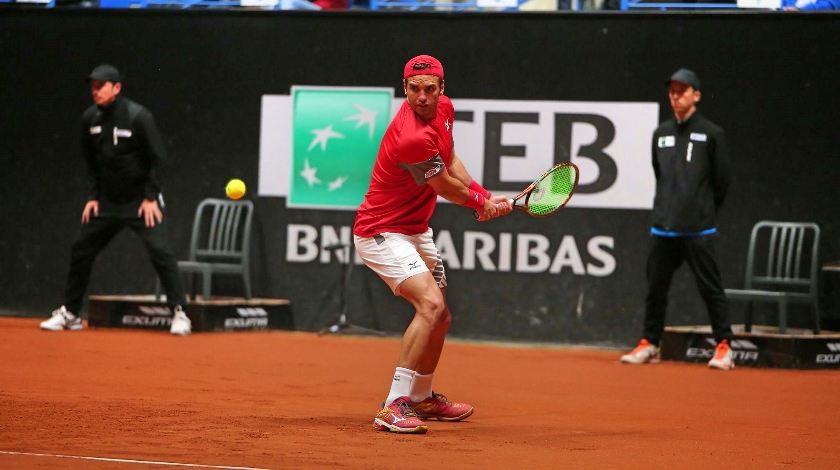
Djere gave him an assist with a forehand unforced error in the net, allowing Jaziri to grab the decisive lead in the fourth game of the second set. Jaziri added to that lead by breaking Djere a second time in the seventh game to serve for the match at 5-2. Djere’s body language was one of resignation by that time, surely the result of endless miles accumulated by his legs over the last four days, in three matches that included the longest one in the four-year history of the tournament, two final sets, and five tiebreakers.
Let’s reiterate, nevertheless, that Jaziri has so far delighted tennis fans in Istanbul (he has more local fans than any other non-Turkish player in the tournament) with dazzling shot production and the kind of determination that has occasionally lacked in his game in the past. He is a streaky player and that has not always worked in his favor in the past. He has, by contrast, showed exceptional consistency in this tournament. Outside of a couple of badly played games in the first set against Jiri Vesely in the quarterfinals, he has avoided the extreme cycles within a match of which he had occasionally been a victim in his career.
Ready for Sunday’s final?
Tomorrow’s final promises to be intense and entertaining. Both Daniel and Jaziri are in pursuit of their first ATP titles and their entrance to the record books forever. That is, at the end of the day, one of the most meaningful accomplishments in the career of a tennis player. Almost every professional player will tell you that they never forget their first title or that they are dreaming of winning one. That is the moment where they finally engrave their name forever in the history of the game, regardless of what happens after that point in their career. In short, Jaziri and Daniel will vie for that which can never be taken away from them in the future. I, for one, cannot wait to see history unfold.

